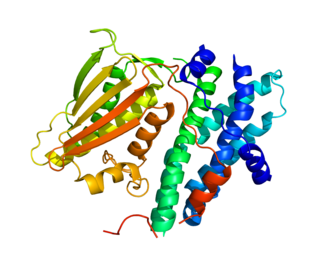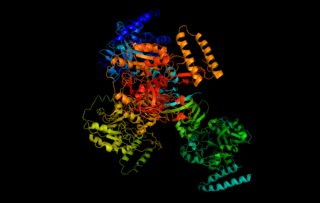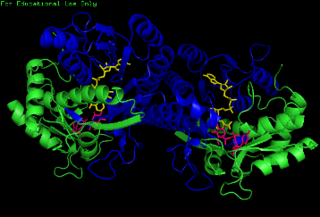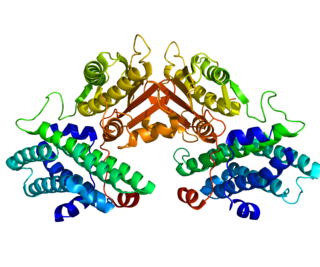 | |
| Names | |
|---|---|
| IUPAC name 3-[(5′-Deoxyuridin-5′-yl)oxy]-1,3-dihydroxy-1,3-dioxo-1λ5,3λ5-diphosphoxan-1-yl α-D-glucopyranosiduronic acid | |
| Systematic IUPAC name (2S,3S,4S,5R,6R)-6-[(3-{[(2R,3S,4R,5R)-5-(2,4-Dioxo-3,4-dihydropyrimidin-1(2H)-yl)-3,4-dihydroxyoxolan-2-yl]methoxy}-1,3-dihydroxy-1,3-dioxo-1λ5,3λ5-diphosphoxan-1-yl)oxy]-3,4,5-trihydroxyoxane-2-carboxylic acid | |
| Identifiers | |
3D model (JSmol) | |
| ChEBI | |
| ChemSpider | |
| MeSH | UDP+glucuronic+acid |
PubChem CID | |
| UNII | |
CompTox Dashboard (EPA) | |
| |
| |
| Properties | |
| C15H22N2O18P2 | |
| Molar mass | 580.285 |
Except where otherwise noted, data are given for materials in their standard state (at 25 °C [77 °F], 100 kPa). | |
UDP-glucuronic acid is a sugar used in the creation of polysaccharides and is an intermediate in the biosynthesis of ascorbic acid (except in primates and guinea pigs). It also participates in the heme degradation process of human.
It is made from UDP-glucose by UDP-glucose 6-dehydrogenase (EC 1.1.1.22) using NAD+ as a cofactor. It is the source of the glucuronosyl group in glucuronosyltransferase reactions. [1] [2]















